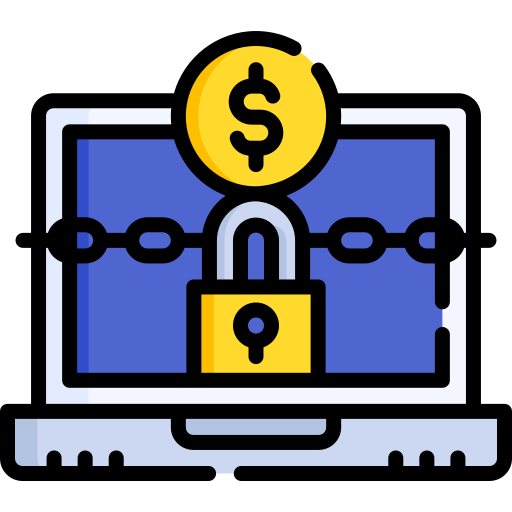Ransomware

Ransomware is a type of malicious software that encrypts files on a computer or network, making them inaccessible to the user. The attacker then demands a ransom—usually in cryptocurrency—in exchange for a decryption key. Ransomware typically spreads through phishing emails, malicious links, or vulnerabilities in software. Once activated, it can lock critical data, disrupt business operations, and even spread across entire networks. Paying the ransom doesn’t guarantee file recovery, as attackers may not provide a working decryption key or could demand additional payments.
Recover from Ransomware attack#
Ransomware attacks encrypt critical data and demand payment for its release. Follow these steps to recover from such incidents:
Step 1: Isolate the Infected Systems#
- Immediately disconnect infected systems from the network to prevent ransomware from spreading.
- Shut down shared drives, cloud storage, or servers that may be compromised.
Step 2: Identify the Ransomware Variant#
- Determine the ransomware strain by analyzing ransom notes, file extensions, or using tools like ID Ransomware.
- Document the scope of the infection, including affected systems and encrypted files.
Step 3: Avoid Paying the Ransom#
- Paying the ransom does not guarantee the return of your data and may fund further attacks.
- Instead, focus on recovery, reporting, and strengthening security measures.
Step 4: Report the Incident#
- Notify your IT or security team immediately.
- Report the attack to local authorities or cybersecurity agencies, such as Action Fraud (UK) or the FBI (US).
Step 5: Attempt Data Recovery#
- Restore from clean backups if available and uncompromised.
- Use ransomware decryption tools provided by cybersecurity organizations for certain ransomware variants.
Step 6: Remove the Ransomware#
- Use reputable anti-malware tools to scan and remove the ransomware from infected systems.
- Ensure no remnants of the ransomware remain before reconnecting systems to the network.
Step 7: Notify Affected Parties#
- Inform stakeholders, employees, or customers if their data was compromised.
- Provide guidance on protective measures they can take.
Step 8: Conduct a Post-Incident Analysis#
- Identify the root cause of the attack, such as phishing emails or software vulnerabilities.
- Document lessons learned and update security policies to prevent future incidents.
Mitigate the Risk of Ransomware Attacks#
Preventing ransomware attacks requires proactive security measures and user awareness. Follow these best practices:
Regularly Back Up Data#
- Create frequent backups of critical data and store them securely offline or in immutable storage.
- Test backup restoration processes periodically to ensure reliability.
Implement Strong Access Controls#
- Use multi-factor authentication (MFA) for all accounts, especially for administrative access.
- Apply the principle of least privilege (PoLP) to limit access to sensitive systems and data.
Keep Systems Updated#
- Regularly update operating systems, applications, and security software to patch vulnerabilities.
- Enable automatic updates where possible.
Deploy Robust Security Tools#
- Use advanced anti-malware and endpoint detection and response (EDR) solutions.
- Enable real-time scanning and behavioral analysis to detect threats proactively.
Educate Employees#
- Train employees to recognize phishing emails, malicious links, and suspicious downloads.
- Conduct simulated phishing tests to reinforce awareness and best practices.
Segment Your Network#
- Divide your network into segments to limit the spread of ransomware.
- Restrict access between segments to only what is necessary.
Monitor and Detect Anomalies#
- Use security information and event management (SIEM) tools to monitor for unusual activity.
- Set up alerts for high-risk actions, such as large file transfers or unauthorized access attempts.
Develop an Incident Response Plan#
- Create a detailed plan for responding to ransomware incidents, including isolation, notification, and recovery steps.
- Assign roles and responsibilities to team members to ensure an effective response.
Enhance Email Security Measures#
- Deploy email filtering tools to block phishing emails and malicious attachments.
- Warn users about spoofed domains and suspicious email requests.
By implementing these measures, you can significantly reduce the likelihood of ransomware attacks and ensure your organization is prepared to respond effectively if an incident occurs.